The New Red Beast Workbook that is Gamechanger for Anger Management in Children
(Inclusive Resources for Autistic Children)

Managing Children’s Anger and Developing Emotional Literacy
Understanding Children’s Anger
Anger can manifest in different ways for children. Some children may react aggressively or shut down when angry. It’s important to educate children on managing their own anger. Children need emotional regulation skills to fully engage and participate positively in the classroom.
Recognizing Your Own Emotions
Adults need to tune into their own emotions and share these openly with children. This modeling helps children understand emotions and that it’s normal to experience anger, anxiety, and more. Take time to write down your own emotions throughout the day to build self-awareness.
Sharing Emotions with Children
Verbally share your emotions with children to normalize feelings for them. Explain what situations caused certain emotions and how you self-regulated. Ask children to share their own emotions after various activities and events. Build class surveys and open discussions on feelings.
Making Emotions Visible
Emotions can seem invisible to children. Using visual illustrations and metaphors makes anger, anxiety, and more concrete. Books like _”The Red Beast- Picture Book”_ include colorful images to depict emotions and regulation strategies visually.
Teaching Emotional Literacy
Emotional literacy should be taught like reading literacy. Surround children with modeling, discussion, and activities about feelings. Have them recognize emotions in themselves and others. Develop their emotional vocabulary.
Emotional Regulation Strategies
Equip children with a toolbox of strategies to manage emotions, like breathing exercises, movement breaks, listening to music, talking it through, and more. Tailor strategies to individual children’s needs.
Using Visuals and Activities
Activities like acting out emotions or using visual prompts make emotional literacy hands-on. _The Red Beast_ workbook activities have children classify words as kind or hurtful and visualize emotional arousal levels.
Parent and Teacher Cooperation
Managing children’s anger takes teamwork between parents and teachers. Educators can provide strategies and emotional literacy foundations, while parents reinforce these skills consistently at home.
Consistency and Repetition
Building any skill requires consistent practice over time. Emotional regulation must be exercised daily to become engrained habits, like learning to read or toilet training. Aim for 14 days of focused emotional literacy activities.
Self-Regulation Skills
The ultimate goal is children independently managing their emotions, not relying solely on adult regulation. With greater emotional awareness, children can recognize rising anger and apply the taught calming strategies.
Tools for Managing Anger
Provide children with a toolbox of techniques to pull from when emotions surge, like deep breathing, movement breaks, focused listening, and comforting sensory items. The more tools they have, the better prepared they are in any situation.
Preventing Meltdowns
Work on recognizing emotional triggers and signs of escalation. Help children intervene early before reaching full meltdown mode, when regulation is extremely difficult. Over time, this prevention lowers meltdown frequency.
The Red Beast Resources
The Red Beast Book
This illustrated children’s book makes anger visible through the metaphor of the red beast. It normalizes and explains anger in child-friendly ways that inspire discussion.
The Red Beast Workbook
With engaging activities and illustrations, this workbook helps children understand anger triggers, bodily signs, and management strategies over 14 days.
Using Workbook as 14-Day Program
The 2-week workbook program aims to build emotional literacy through repetition. This cements new coping skills into long-term memory for children to access a
NEW Workbook
Out Now
This very practical workbook shows Danni coming to terms with the reasons for his angry outbursts and learning ways to control his Red Beast.
Included are a number of black & white illustrations from the new edition that are excellent for discussion times – the children can colour them in as you talk about the content – very therapeutic.
Suitable for ages 5 to 10.
$48.95
Out of stock
8 Key Ways You Can Use the Red Beast Workshop to Help Children to Understand and Regulate Anger
1. Use Metaphors to Explain Anger: The concept of the “Red Beast” serves as a metaphor for anger, making it easier for children to understand and visualize their emotions.
2. Teach Emotional Regulation: It’s important to help children recognize their emotions and learn how to control them. This can be done through activities and exercises that promote self-awareness and self-control.
3. Implement a Consistent Program: The workbook is designed as a 14-day program, emphasizing the importance of consistency and repetition in teaching emotional regulation.
4. Promote Positive Reinforcement: Praise and positive reinforcement are key in helping children manage their anger. Recognize their efforts and progress to motivate them to continue practicing their anger management strategies.
5. Incorporate Whole-Class Activities: The workbook and its strategies are not just for individual children struggling with anger. They can be used for the whole class to promote a better understanding of emotions and empathy among peers.
6. Understand Sensory Sensitivities: Recognise that sensory sensitivities can be a significant trigger for anger in children. Some children may be oversensitive to certain stimuli (like the sound of others eating or the texture of certain materials), while others may be undersensitive. Understanding these sensitivities can help in managing situations that might trigger anger.
7.Use Visual Aids: Visual aids can be a powerful tool for teaching children about their emotions. For example, using the analogy of bowls of different sizes to represent sensory systems can help children understand why they might react differently to certain stimuli.
8. Individualise Learning: Recognise that each child is unique and may react differently to different situations. What works for one child may not work for another. Therefore, it’s important to individualize learning and strategies for managing anger.

Listen to the Podcast where we discuss the new Red Beast Workbook and the following challenges and solutions
|
Problem/Challenge |
Strategies/Solutions |
|---|---|
|
Difficulty in explaining the concept of anger to children |
Use of metaphors like the “Red Beast” to help children visualize and understand anger |
|
Children struggling with emotional regulation |
Implement activities and exercises that promote self-awareness and self-control |
|
Lack of consistency in teaching emotional regulation |
Use of a 14-day program to emphasize the importance of repetition and consistency |
|
Difficulty in motivating children to manage their anger |
Use of praise and positive reinforcement to recognize children’s efforts and progress |
|
Only a few children understanding emotions and empathy |
Incorporation of whole-class activities to promote a better understanding of emotions among all students |
|
Problem/Challenge |
Strategies/Solutions |
|
Sensory Sensitivities: Children may react strongly to certain sensory stimuli, leading to anger. |
Understand each child’s unique sensory sensitivities. Adjust the environment or situation to minimize these triggers where possible. |
|
Lack of Emotional Regulation: Children may struggle to control their anger, leading to disruptive behavior. |
Teach children strategies for emotional regulation. This can include recognizing the signs of anger and learning techniques to calm down. |
|
Negative Attention: Children acting out may be seeking attention, even if it’s negative. |
Ensure that children are receiving positive attention, affection, and approval. This can help to foster a positive environment and reduce instances of anger. |
|
Difficulty Understanding Emotions: Children may not understand why they feel angry, leading to frustration and further anger. |
Use visual aids and simple language to explain emotions and sensory systems. This can help children understand why they react the way they do. |
|
One-size-fits-all Approach: Traditional behavior management strategies may not work for all children. |
Individualize learning and strategies for managing anger. Recognize that each child is unique and may react differently to different situations. |
OTHER FANTASTIC INFORMATION ON HELPING CHILDREN WITH ANGER.
Executive Functioning Course - Sale On $79 (save $70)
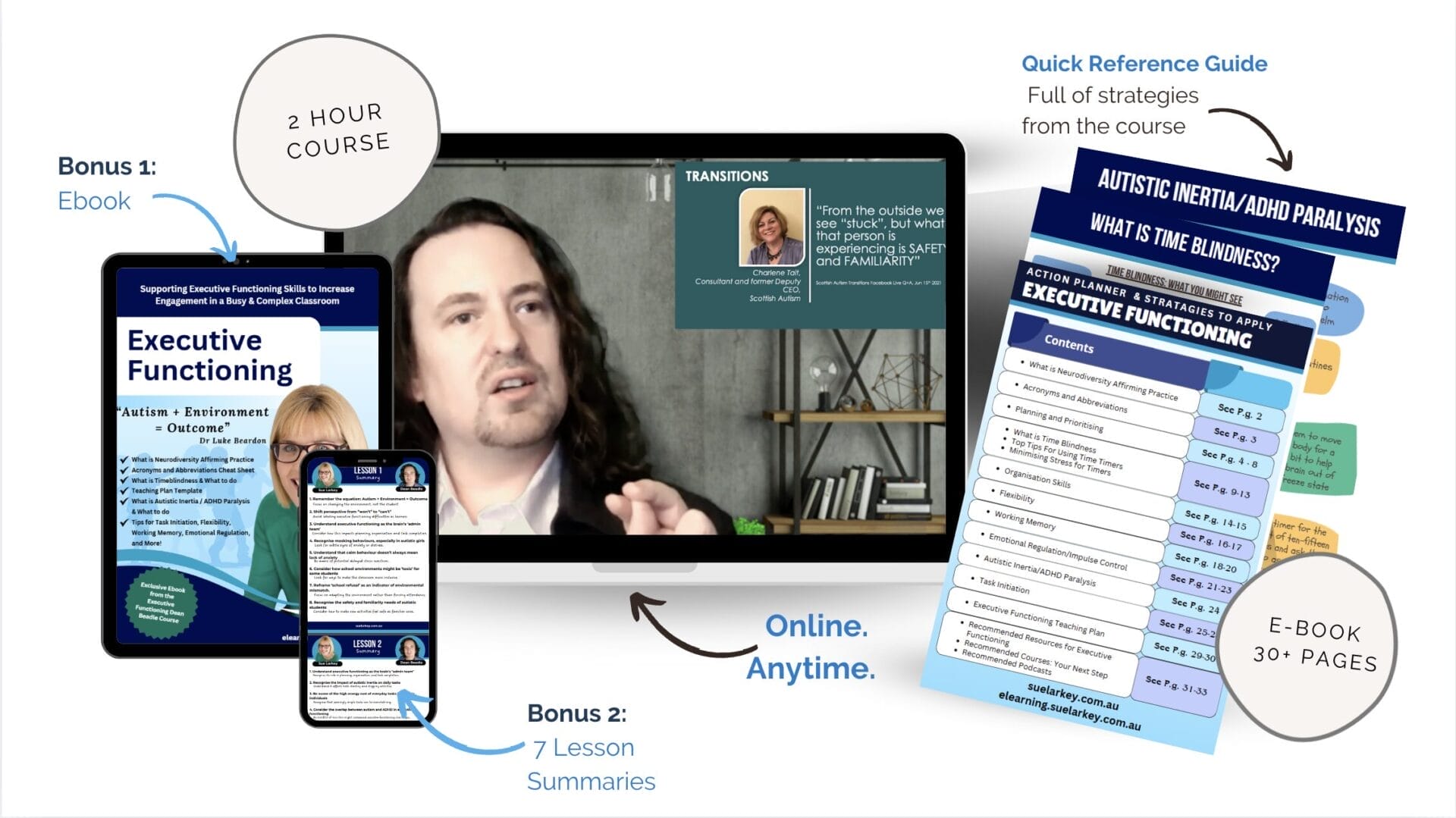
Pathological Demand Avoidance (PDA)
in the Classroom: Understanding and Teaching Strategies for Educators
(AS, PDA, ODD, ADHD, etc)
✅ Understanding of Pathological Demand Avoidance (PDA)
✅ What are Demands and How to Avoid
✅ PDA & Anxiety: Key Strategies
✅ Difference between PDD, ODD, and ASD
✅ Practical Approaches and Strategies to Support Learning
✅ Supporting and Understanding Behaviour
✅ PDA and Education: How to Make it WorkWhat, How & When to teach Social Skills
 2 Hours
2 Hours
 Certificate
Certificate
$149
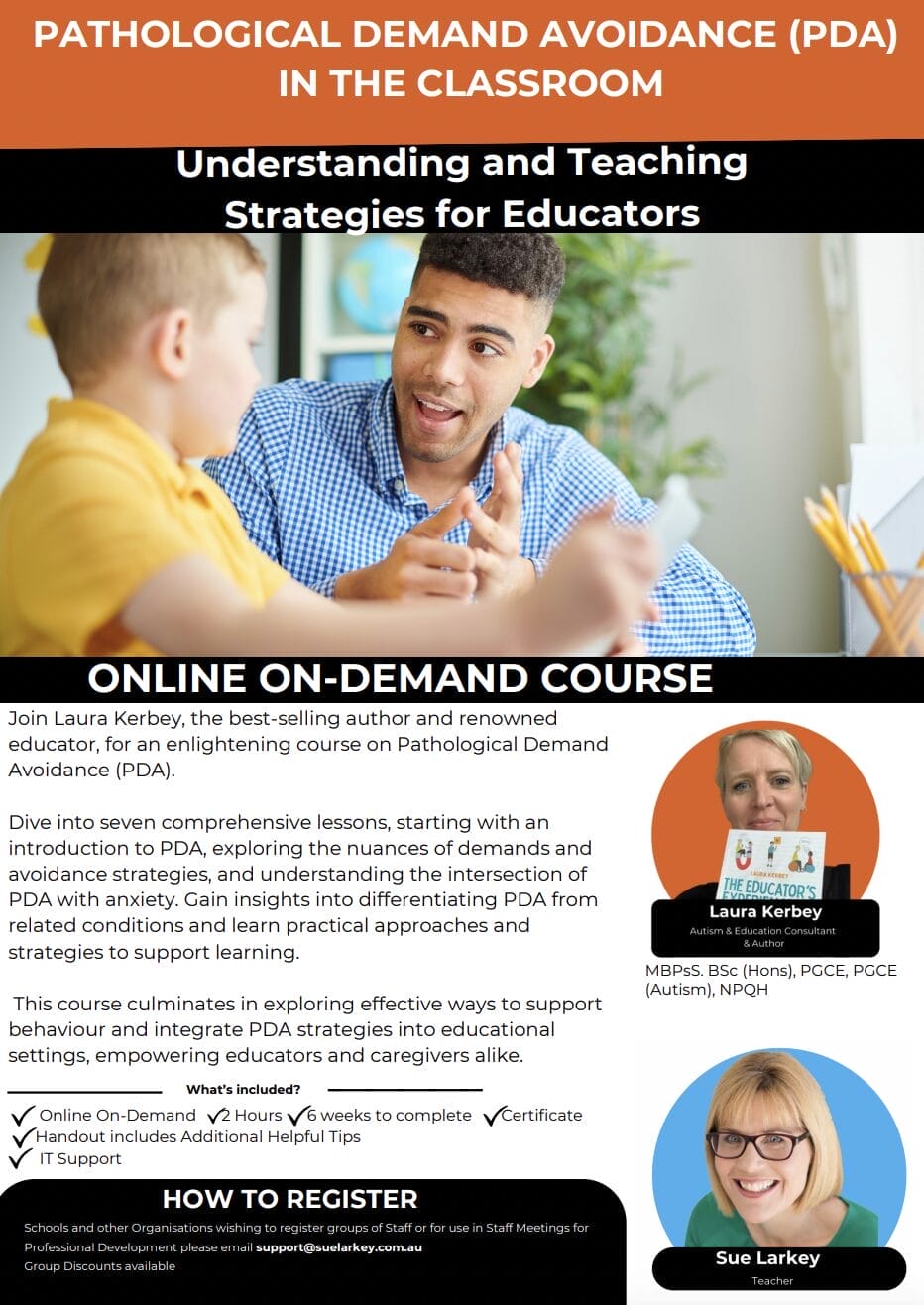
NewBook – Sue and Kay
Sue L: [00:00:00] Welcome everybody. I am so excited to have Kay with us today to share all about our new book, which is the Red Beast Anger Workbook. Now, I must say I was a huge fan of Kay’s work, and she’s been on my podcast many times, and we actually became really fast friends through the podcast, didn’t we, Kate? We did.
It’s so lovely always coming on this Zoom talking to you. It’s just great. It’s so good. And so well, I was very lucky because I’d been using the Red Beast Picture book for many years with the children and schools I go into, and some of my schools have a whole class set to help the children understand anger.
Introduction to the Red Beast Anger Workbook
They’re just the most fantastic picture books, and I know this week I had an email from a school counsellor saying she puts it in every school. She goes into the Red Beast book, and one of the things about the Red Beast book that I love, it’s so practical. You can just pick it up and use it. But Kay, Kay and I both [00:01:00] really realize it could be wonderful to have a workbook that goes with it.
It really saves teachers time and gives them ideas on how to use the book to actually help children understand the anger. Their emotions and move it from sort of that sort of picture book to actually a practical program to help children. Is that how you see it? Kay? Absolutely. I think it’s, it’s really important because you’ll know, and I know we get called into schools when children have problems with anger and then be told that the story went down really well and they could understand.
Stand that, and they were doing the sort of some of the strategies to become their red beast, which was great. But how do you move on? How do you get them to develop an emotional sort of responsibility and social responsibility? For, you know, how the anger affects not only them but everybody else, all their family, their friends, the people in the school.
And without being blamed, without being shamed, [00:02:00] it’s a way that you can work these things through with whole classes. It’s not something you just have to do with an individual child while you can, but with a small group or even I’ve seen things done. Right through the whole year group. So the whole year group would do something, and every child needs to learn emotional regulation.
You can be too young, of course, to learn it. You can’t do what your brain isn’t ready to do, but you can never be too old to learn some strategies. And I think it’s; this journey is a sort of formative, formative journey. So we are looking at it in the longer term. It’s not like a book. Pick it up or do it.
We can. That’s it. Lovely. Cuz you and I know behaviour management is one of the still tops of the list of features and concerns in schools. And it’s never changed. Has it? Even if we had to go back in the past, they got punitive measures. And we know, we see, science tells us 80, 90% [00:03:00] of children will respond to punitive measures.
But it’s your hardcore or your children with autism that are always outside the headmaster’s office or, you know, running around the playground without anybody supervising them that are the ones that we really want to reach and teach. A hundred per cent Kay. And my biggest passion is that all children can come into the classroom regulated.
That they can come back from the breaks. Like we’ve got a whole section on winning and losing. We’ve got a section on words that can be a hurtful and beautiful activity to explain that. So this book, this is why I agree, it’s for the whole class because all children say hurtful things. All children don’t like losing.
But for our children who are on the spectrum, often these things happen, or any children, not just children on the spectrum, but any of those sort of 10% of children who need us to teach differently, I think this workbook is for them, and that’s why we’ve [00:04:00] made it like a 14-day program. It’s not a.
Quick fix. It’s a; it’s actually a little program you can do with the whole class. And I think it’s worth doing with the whole class to help them all understand anger and their emotions. Cuz I was reading something the other day that if we teach this in primary when children hit teenage and secondary, these are the skills they need.
Like, because when their hormones come in and all those things that absolutely. Emotion. Yeah. Emotional regulation’s ongoing. It’s not one-off; it’s. But strategies need to be in long-term memory, and we can’t put them there unless we practice, practice, practice. And we know science tells us all of our things are scientifically based interventions.
You know, we do that, but we don’t use any academic speak. We are doing this through the voice of Danny, which is the character in the book, in order for everyone to be able to understand, but to get them in there, we need to make sure that they do, if they want [00:05:00] to know how to calm. The beach is a two weeks thing.
We’re gonna do some things for two weeks every single day, five days at school, two days at home. And then, at the end of that, it should have gone into long-term memory. And now you don’t need to think about it. It’s like learning to drive a car. When you first do it, you can’t do it. So when it all gets in into your memory, you don’t have to think about it.
And that’s what we want. We want these kids to think, well, I’m getting a bit, oh, I know what to do. You know, make a graceful retreat to somewhere that they set up before and calm yourself. Cuz then they know what to do. A hundred per cent and can, we can praise them. And that’s what we need, isn’t it? This compassion and this and the continuous positive reinforcement, which, again, is scientifically based.
We know that positive interventions do work, but unfortunately, you go into school, and you’ve taught this to the teacher and to the TAs and everyone, and then you call back in at the end of term, and you sit at the back of the, and you realize, well, There’s not a lot of [00:06:00] positive reinforcement going on.
You’ve forgotten about it because it worked at the beginning, but we need to get it into our own long-term memory as well as the children and Okay. That’s why I love doing it with the whole class because it actually changes the language, and everybody starts to talk about it ongoing, and it’s not just a one-off thing we do as a class.
And I love how the book starts off with Danny and him learning about dimming. Do you wanna share about it? Yes. Yes. That’s it. That was something that I’d I tried to explain to a child that, because, you know, everyone would say just suddenly he’s fine, and then the next minute he’s, he’s off the scale. He’s really, really angry.
So I tried to explain to a child I had to actually bring one in because it’s a bit of the 1980s thing. I’m not sure if we have the switches now, but it was a switch that you could, Slowly turn the lights up and turn it down. And sometimes, I’d pretend there was a regulator on his back and pretend to turn it up.
But with you, [00:07:00] it’s like a flip switch. It switches on quickly, and before you know it, you can’t do anything about it because actually you can’t listen. Your thinking brain is. Cut off, it switched off. You can’t, and we said, we in a big box that this is all about that part of the brain, the amygdala, which is really connected with protection.
It’s not a connection. You can’t turn something off by talking about it. When the child’s in that state, you have to think about other, other strategies. Yeah. And teaching them what yes turns they switch on and, as we’ve done in the book, talking about how it feels in their body. Cuz some of my children can’t even recognize that that’s anger.
And that’s what I love about the Picture book and why I’d encourage people to get the revised and updated picture book because the new, the old book’s great, but the new book’s so much more inclusive. And Hamm’s done some beautiful new illustrations. Absolutely. He was so keen to do it [00:08:00] because he hated those illustrations.
They were just done literally overnight, sort of for me. Cause I, I wanted that story, and I needed it right away. And it’s only when I saw that it worked on the child I was working with that I thought, I’ll try and get it published and sent them off. But he never liked those illustrations ever.
So it was, it was a good, a good exercise for him too. Yes. Yeah. Well, that being said, Kay, you sold 50,000 books, which, you know, is unbelievable. I mean, yeah, I think it was the premise of it, the idea that somehow we could use a metaphor because we’d so, so quick to judge these children and say that they don’t understand these things when actually if you put it in the right.
Format they do. And I saw this, I mean, you go right back to when Hayden was a little boy. What did he enjoy? He liked watching cartoons. He could speak Disney before he could speak. Then as soon as he had the motor skills, he loved to draw cartoons. So he had, [00:09:00] and then you are thinking, aren’t you, this is like they inventing these things themselves.
And now, guess what? I just read a study. 1922 study that showed that if you do, do you remember the Simon Barron Cohen thing about the language of the eyes? They’re now doing it with picture eyes but with cartoon eyes. And guess who excels on that test? Adults excel better with cartoon eyes because that’s what attracts them.
They’re attracted to, let me get this right because I thought we didn’t know this when we started all this anthropomorphic. Actions or things like anime cartoons, anything avatar. The things that the kids love now on, you know, on their computer is exactly what our children we’re doing. Like they’re gonna get 38 next week?
The Role of Emotional Regulation in Children’s Lives
So 35 years ago, 38. Oh, my goodness. But also, Thomas. I mean, we’ve always known that the [00:10:00] faces on the front of the trains and the eyes is what so many of the children love. And people used to say to me, is it the train tracks? No. It was no. And explaining the emotions and how Percy’s feeling and Thomas is, yes, fact, they could see it.
And I think with him, he would be the rewinder. I mean, it was the day of the video recorder. Yeah. And that was just like magic for him cuz he could rewind it. Watch again, drove his sister mad, but that’s what he would do. Keep rewinding and said he got really good. And I remember taking off as a mad mention he got.
He was expelled from his first school when he was three cuz he escaped on a bicycle down the road, and they thought he wasn’t quite ready. So I tried to get him into my daughter’s school, and I had to take him in for an interview. And they weren’t like the other school. They took him in on the strength of my daughter, who had great social skills and was brilliant.
He was a student. Soon. Turn out he wasn’t. But this school weren’t, and in the interview they said something, they asked him some questions like, do you [00:11:00] have any brothers or sisters? And he said, and he’s now six. My brother is my sister. Because he only had a sister, he’d dad have a brother. I could see alarm bells going off, you know, in the head.
So she called for the special needs teacher to come along and have a little look at him, who gave a really good friend of mine. So she took him upstairs and did the good enough Draw man assessment to don’t if you remember that. No. Right. Ask the child to draw a picture of a person, and then you add up.
Have they got eyes, ears disorder and gives you a mental age? And apparently, she’d asked him, set the test, drop it, and of course, he didn’t draw people. He draws either frogs or monkeys, and he draws a monkey. So she knew that. But she said he’s drawing a monkey in profile, which. It puts off the scale of, you know, intelligence, but they did realize it was something not quite right.
They did take him in and actually worked around it and got the diagnosis, sort of, you know, a year later or so. [00:12:00] Yeah. Wow. But that’s amazing. Kay. It is through you want to understand and help him you’ve been able to help so many other children; look at him now. How many books has he illustrated?
Like I know, Yes. And he only loves to do it, and he works from home, and it just, everything about it suits him because, you know, it’s something that gives them they get social pleasure outta. Drawing cartoons, reading comic books, watching, you know, anime films or whatever these children enjoy that it’s not just, but it also, we know now improves them socio-cognitively because we can see that this carries on into adult life.
And if you do those sorts of mind-reading tests on neurotypicals and people with autism when they’re adults, they’re more or less the same, especially the girls. Yeah, there’s not much difference. But in terms of using the cartoon eyes, they excelled. Yeah. They actually overtook the neurotypicals in [00:13:00] understanding the emotion.
I, I’m just looking in the book Kay. At the faces that he’s drawn in the new book in the workbook. Yes. And like, it, it’s, the expressions are just amazing. When I try and draw a face, I, they all look the same, but I can just flick through here. Like, I love the way that he’s got the red beast with the.
The pouting and the cheating and the the eyes and the mouth. I mean, I can’t wait for people to have a look at how gorgeous it is cuz he just captures it so well. And I think the idea that you’ve got, you have a negative attitude. Are you pouting, shouting or, yeah? Cause got the pouting, he’s got the shouting base, and he is got the claim base as well.
He hasn’t; he’s really funny. It’s adorable. And also the Fs. Hang on. I’m just looking for them. Then, yeah, the freeze flee. That’s right. The, the, the frozen one is particularly good, and it’s still showing the angle, all those frozen. It’s so gorgeous. I might try and put that with the [00:14:00] podcast so people can see how clever it is with that.
Yeah. And the fluster, the fluster is a really nice one too. And again, it’s, I wouldn’t have been able to tell him, can you draw what cluster is? Cause it’s really, but he just gets it. A hundred per cent. I couldn’t believe when we were, no, when we were doing the book together, Kay and I, Kay, go, well, I’ll get Ham to draw something for this.
And I think, how’s he gonna draw it? And then a week later, you’d send me these amazing pictures. And I, I, we didn’t have to send back. He likes them all, and he particularly likes black and white. Yes. No, the picture books are great. I mean colour, but if he has a choice, he much prefers to join black and white.
And now, remember Macon years ago when I was learning how to Macon, so they always, and still do, use black and white symbols, whereas many people now use colour symbols, but something to do with the brain and the access to the brain, I don’t know. It needs No, I, I agree, Kate. With Boardmaker, I [00:15:00] often say to teachers, don’t colour it in.
I know you want it coloured in as a neurotypical person, but my neurodiverse children for further black and white line drawing. Yes. And I think it’s really important. The color can often be distracting actually, for some of my children. Yeah. So anyway, let’s get back to talking about the book. I know this is, this is as you can hear, our listeners, all these fabulous tangents.
The Impact of Anger Management Strategies in Schools
What I wanted to say with the book is there are fabulous downloadables that they can print out, isn’t it? That ham’s drawn to go with the book. So our understanding is to buy the book, and then you can print out all the printables to use with the class. Is that right? Okay. I think that’s probably it. That’s, but you can use it, answer workbook and write in it.
You can still do that if you want to, but to preserve the book and to have it on four-size Sheets, then download and it and it really comes out really well. So all the pages that you need to work on, you can [00:16:00] download and then photocopy can really when download. Yeah. Cause we originally imagined the book being a four because we are teachers, and we are always four.
The others were, yeah, it was, but I think it’s a nice, sort of a nice size. Isn’t it? Nice? I agree. And, but the fact that. Everyone can print out Ham’s worksheets in a four and still do all those, then? No. Well, we can download it, I think, and then you go copy it so you can photo it, then it becomes photostable, so then you can photocopy it without
What are you prepared to like? Just tell us a little bit about Danny or read us about Meet, like that little first bit about meet Danny and his family, because I love when you read that. So need to find that first page, isn’t it? Here we are. So it’s fine. My name’s Danny. I love all electronics, walking my dog Delores, and going fishing when I’m busy doing the things I enjoy.
Life’s just perfect. However, [00:17:00] sometimes life can be tough. You see, I can get very angry very, very quickly. It takes everyone, including me, by surprise. My dad says in anger. Anger seems to be my default, so I’m working hard on trying to change it. And then we have gran who says something, and we have a teacher, and it was the teacher that says this is my teacher, Mr.
Parker. I really like and respect him. He says everyone gets angry from time to time, but when I get angry, it’s like a switch flips on really quickly. Mr Parker says I need to change that split switch to a dimmer switch if I can do that. He says it will make me, give me time to try to get control of my anger and make some better choices.
And then we have Uncle Charlie, and I love Uncle Charlie the best. Cause. Uncle Charlie’s the one who takes him fishing. I love fishing, and it’s always a good time to talk about things because I feel relaxed. My uncle says Being angry can make us all lose control, and before we know it, [00:18:00] we can be in danger.
Understanding Anger: A Personal Journey
He knows because he used to get angry too. When he was my age, he showed me that by putting a D for Danny in front of the word anger. It spells danger. He says anger can make us be in danger of doing something stupid or hurting ourselves or someone else we might lose control and do or say something we relate to, regret and feel really sorry about.
Uncle Charlie says anger’s in all of us, and it’s our job as we get older to try to learn ways to handle it better. Absolutely. And that’s what I love. And I love the danger too, and I love Uncle Charlie, and I love Ham’s drawing of the fishing. It’s just adorable. Yeah. In profile, we might have, yes. Yeah. In profile.
Exactly. In profile. And then, for people who are interested, the book thing goes on. For Danny, Learning ways to calm the Red Beast, and what he has to learn is what wakes up a red beast. And we [00:19:00] talk about what wakes up lots of people’s red beast and everyone. And that’s what I love about the picture book, too, talking to children.
Well, what wakes up your brother’s red beast or mom or dad? Everybody’s red beast wakes up for different reasons. So we, and that’s why I like to do it with the whole class because one thing that makes someone angry can make someone else laugh. You know? Yeah. Helping children and Absolutely. And I think, cause you are so brilliant with workbooks, we did those lovely tables, didn’t we?
So it’s all there; it’s just a matter of a tick or a face that you can put on. The children can choose. And then there’s space to write your own if you’ve got something different at the bottom. So it’s already, we don’t have to make a list, get them to copy it out, remember it the next time it’s all there and it can be filed and they’ll have their own little books, you know, afterwards.
And that’s what’s nice, Kay. Cuz you and I have worked with lots of students. We’re able to put in the things we know that students tell us and what we’ve experienced from that. So that’s, yeah, [00:20:00] that’s, and all lots of suggestions. There are loads of suggestions of how you can arm your. Probably things they’d not thought of, and they might be things.
I used to do that with my class, and we’d have a little session at the end of the day, and they choose, do you wanna have these really nice candles? Do we want to do a foot massage on each other? You know, we could, we could choose. And they’d calm before they went home. Cause that’s transition always trouble.
And we knew that home time was often a time when they were gonna get overexcited or upset. So it was always nice for the parents, and they used to say, oh, they come out so calm. I said, yes, we do calm before we leave. So doubt. And if I have to deal with children that I know are sensitive, I give them my cushion.
I’ve got this really squashy cushion, and I say, I’m gonna give you my cushion to shield you. To cushion you for what I’m gonna say. And they would hold it and laugh because, you know, Getting across to them. Like, we might not like what we’re gonna say now, but actually, I’m gonna say cuz I [00:21:00] love you. You know, are we gonna get through? We’re gonna work through this.
So some of them would then bring in their own coat. They’d all sit in the cushion, you know, on their chest. I love it. I love it. And, this is why the book is so good, cuz it’s full of all these practical, lovely solutions and then the pictures that Hay’s drawn to go with it. And the other thing we’re really conscious of that some of our students don’t always like, Doing lots of writing.
So we’ve given options to colour in or to do writing, and word finds like there’s a whole lot of different ways of learning for our different children. We haven’t made it all writing or all colouring, or we’ve tried to make it very adaptable for each child, so, Depending on their age and stage that it’s very accessible.
Yeah. And also the one genius thing, and I stole this from you, and I used it time and time again in schools, was those cards you did sensory breaks, you know, movement breaks, and we’ve made those take a break card. [00:22:00] Downloadable so you can give as a positive reinforcer at the end of a session. We pace it; it’s done in small chunks.
We never over-face the child when they’re doing well. That’s when you stop. Yeah. You don’t carry on a bit more. It’s like when you’re doing reading, isn’t it? And you get the child, they’re reading really well, and then suddenly it all goes pear-shaped, and you end up, you know, saying, well, you could read that before, no stop when you at a high.
Absolutely tried.
Take a break card for 15 minutes so they know at the end of this session, you know what, I’m gonna be able to read my comic or go on the computer for 15 minutes, or we’re gonna have a run rag. So that makes it, PA just gives it the pace and the positive. Absolutely. And I think what’s really important is what you said there is.
The Role of Teachers and Family in Managing Anger
We’ve tried to make it really fun, and that’s why we’ve introduced these lovely characters. And Danny’s talking about himself, not, yeah, we’ve been very conscious to not point the finger at the child. It’s Danny sharing his [00:23:00] experience and then getting them to sort of share with Danny their experience and the adults.
So it’s like, that’s why it works almost better in a group because then you can bounce off each other while I find this. And also that helps because what I find with. Children with neurotypical children are that they can aggravate Yes. And sometimes, they do aggravate the child, and that cause causes anger.
I had a little girl who actually helped me with the writing of the book, the Panic Asurs, and she had been given a workstation, and she had all her things on it, and they actually would regularly get. Almost blind with rage because people would just come past and touch things, and they’d run a finger, and they knew she was gonna be, you know, she was gonna get to lose it if they did that.
So when I went into the class, I just had to say, look, how many children, 30? How many fingers have they got? And that’s 300, isn’t it? And that’s 3,300 chances that a finger is gonna [00:24:00] touch your stuff. What can we do? I got a big box, a beautiful box with pigs in it cuz she loves pigs. And we put everything in the box, putting it under the table, and she only took out what she was using, and it all went into the box, and it just cured her, you know?
I love it. I love it. And then the children, when we, when we all read the story of the book, they realized that they shouldn’t have been doing that. They thought it was funny cause she didn’t like to touch, but actually that was generating, that was waking up her beast. A hundred per cent. And that’s what I love in the book, that I think when we do it as a whole class, we realize we all get angry about different things.
And you know, some people shut down, some Mel, you know, and everyone reacts differently. And that’s why when I talk to children, I love talking about different people, how different people react and making them feel like it’s okay. I react in my way. But I need to manage that emotion. And I love what you said earlier, that we need to really get that into the child’s long-term memory and [00:25:00] understanding.
So my question to anyone listening is, you know, do you know a child who gets angry? Are they spending any time not learning or outta class? Have you tried things already that aren’t working? Because Kay and I would think that often a lot of things schools use aren’t devised for our children and. What we’ve done is put in this book all the things we know, work for the children if what you’re using isn’t working.
So, yeah. And in fact, you couldn’t use it. You don’t have to do the whole book. I had a PE teacher who had a problem with winning and losing with the children, most of the children, but especially with child autism in his class. And I devised that exercise that we have in here. Especially for him. So it’s based on what the teacher then told his children and what they did to prevent them from thinking about winning and losing and what that means.
And then they, they have their certificates to have. That’s another thing we have, don’t we? When they made, when they learned [00:26:00] this, they, they nailed it. They know it now. Then they get the certificate to prove that, and they will stay and go home. An absolutely. And we’ve also got in the book, cuz what, what I did when we were writing the book, I asked on Facebook, what are things that make children angry?
And we took that feedback from hundreds of people that were things like winning and losing perfectionism. Sensory. And we’ve included all of the top things that people told us actually can make their children angry. And I mean, there were things Kay and I knew, but we wanted feedback from the community, like, where do you need help?
And with the sensory, sensory, cause sensory is something that they don’t relate. To, if you don’t have sensory issues, it’s very difficult to understand why when you just br brush past someone in the line that they got angry, you know? And, but when the class is learning about this and realizes that they’ve got these sensory issues and especially this one about interception, which I think it’s gonna be the [00:27:00] new buzzword, we need to teach our children about interception because if they are hungry or thirsty, they are going to get angry.
A hundred per cent realize it causes them to know their blood sugar is low, and they need to replenish it. I, I read a fabulous thing today. Kay. And it said self-regulation is the ability to manage, monitor, and react. The true behaviour. Yeah. Emotional regulation is the ability to control your emotions. And interception is the sense of knowing what’s going on inside your body.
And that’s where. All your picture books cover all of those. But I think in this book, we’ve combined all of that. We’ve combined both all in. I think we’ve also done very nicely because this is, again, it’s a scientific sort of thing, the way we’ve used the cup sizes to show whether you are overly sensitive, Orly sensitive, you know, and everybody.
They can do that, can’t they? Maybe you don’t add it like the smell of garlic. I’m really, I, yeah, there we’re, well, [00:28:00] people can’t see this, but can you explain? Yeah. Yes. Yeah. Turn to what page is that? Yeah, so in the book, what we did that we could make it more visual cuz Kay and I are very aware of how visual learners are.
When we talked about the sensory system, we talked about how some children are over-sensitive and some are under-sensitive. And we use the analogy of using bowls like the too big, just right, too small. Yeah. Do you wanna explain it? Kay. Cuz you explained. Yeah. So we have this idea that there are eight sensory systems.
Sensory Sensitivities and Their Impact on Anger
The one, the five we all know, and then the. The movement one, the vestibular, that’s your balance and intersection. How your body responds to the signals, the heartbeat, everything is telling it, and what the brain does to relieve you. So if you know you are hungry, you can feel your tummy rumbling, you know you are hungry, you go and eat.
But whatever, your tummy is rumbling. You don’t know why. So you don’t go and eat cuz you don’t understand that you need to go and eat. So those things. So, and [00:29:00] here we have, we have Danny’s speaking. And he says, yep, no kidding. Eight sensory systems. My OT told me we could think of the sensory systems as having a different bowl for each of these eight sensors.
These bowls need to be just the right size so everything’s well organized and feels right if you have sensory processing disorder. Your bowls may not be the right size. Now you can have S V D and not have autism, or you can have it generally. It generally is, but it’s different for everyone. If we’re oversensitive to a sense of touch, then that bowl’s too small and too much input will cause it to overflow, and we may find it touching us.
Things touching get very annoying or painful, like wearing socks and labels and clothes or someone rushing past us. If we’re only sensitive to the sense of touch, then that rolls too big. So we may enjoy really big bear hugs or be wrapped tight in a blanket or wearing a weighted jacket, or we may not be sensitive to pain [00:30:00] in a body where the sensory inputs are working properly.
The bowl is always just right, and so everything’s working well. Each sense has its own goal. So you can be oversensitive to one sense and under-sensitive to another. So how did we put that into the, you know, we talked about this a lot. How do we put it into language that Danny can explain it to others?
So absolutely. Scientifically based, evidence based. It’s in a way we don’t use research seek. No. And also then we can talk to the whole class about, and I like setting up sensory stations, and that’s what we’ve done in the book, getting children to work out well; some children love things, and some don’t like things.
And I, I love getting children. Like, I remember once in my class I got, like, you know, different feelings of things like scratchy things. Some children love a scrubby brush, or you know, others hate it. I mean, you were talking about foot massage. Well, some children hate having their feet touched, and some go, [00:31:00] I dunno, I go for a massage.
I don’t like that. Something really close to me. They’re not touching me at all. No. So that’s what I love about the book, that you can individualize it for each child, and I actually think. Teachers are gonna learn a lot and educators about the children that the children in your class, what they’re sensitive to, like, absolutely.
These are very important conversations. So you might discover that this child actually, when the lunch orders come in, or you know it, what do you call it in, in the UK that dinner. The dinner ladies. Yeah, the, the dinner ladies. Yeah. Some of my children don’t like the sound of other children eating or the smell of the food, or even the things going into their mouths.
Yes. And others absolutely don’t affect them at all. And that’s the advantage of the book because for some of my children, that can make them angry, and we are teaching [00:32:00] them strategies to notice that anger. And then regulate it. And so that’s what excites me that we are giving both children and educators and families. We would love you to get the book too.
The strategies to help your children recognize and then regulate their emotions. But remembering emotions don’t just come from perfectionism and all those things that can come from sensory too. Absolutely. And I think that your point there about, you know, the, the, the dining hall and the, and the thing, the problem is that quite often when children misbehave in the dining room, they get given a social story.
Yeah. The social story is telling That’s not gonna work. I had a child that would always kick off at the same time. Every day when I went in, they say he’s up the tree, he’s climbed, the tree goes there every time at this time and he won’t come back in. And I realized it was because of the smells coming from the dining room cuz they were ready to, to, you know, serve up.
And so [00:33:00] we brought him in through a different door, put him in a separate room with another couple of kids. He never went up the tree again. But you know, they tried in with all sorts of social backstories. They, but if you dunno what’s causing it, then they’re not gonna work, are they? Yeah. I, I, I mean, I, I know lots of people who follow me on Facebook would say I regularly put up one of my favourite things, which is never in the history of calming down. Has anyone calmed down by being told to calm down?
Practical Strategies for Emotional Regulation
And for many of children, We, you know, there’s no point sitting them out to calm down or sending them to the principal. What we need to do is work out the tools and strategies that a child needs to self-regulate. And this is one of the struggles I have in Australia. So often, the current behaviour systems that we use are so much more positive, but many of my children don’t have the skills to self-regulate, so they end up.
You know, on the Red Step or what? The red [00:34:00] area, fifth step, or whichever language the school uses, because what we’re not actually doing is giving them the tools to not end up there to help them dim that switch. And That’s right. And, sometimes, they just don’t understand the system. I mean, I have a child, and they kept saying always on three, three ticks the whole time.
He’s on three already. He’s on three. And it’s dark. It started the day when I started him. It was a good thing. And he was, in fact, ahead of everybody. Cause I’ve got three. I’ve got three. Ok. I had a student exactly the same
, and every time the teacher gave him attention, he didn’t care if it was good or bad because, no, he, he, he was like, that’s, that’s. I’m getting my attention. So, he had this whole tick system himself, and he ticked; I didn’t need to do a behaviour chart cuz he ticked off every time the tick gave him attention.
And what does every person on the planet need? Attention, affection, approval. If they don’t get those [00:35:00] three things, they’re never gonna be happy. So as a teacher, as a parent, Are they getting positive attention, affection, and approval, and then I just have to sit in the back of my class, and I can see immediately, oh, the eyes go to heaven, don’t they?
I, he’s in school again today. What does that say to the other kids in the class? You know, it’s, it’s, it’s not right. We have to be more compassionate. Do we have to understand that these children that have problems with emotional regulation they’re not doing it just to make your day bad? They don’t get up in the morning with the idea, you know, what a really naughty day.
That’s not how it works. No, I think Kay, that’s a beautiful way to finish off this conversation, and I just really would encourage people if they haven’t got their latest; you don’t need the Red Beast book. You can just get this new book and use it on its own. But if you haven’t got Kay’s original Red Beast book or the revised and updated one.
I think having both together would work really well. They do; they have been [00:36:00] made cuz we did change the character names to make them a more sort of neutral. So it became Danny; it was Rufuss in the old in the old book. And there are a few things that changed, and it’s much more inclusive in terms of the illustrations there.
So because our schools have changed, it’s a long time since that book, you know, was brought out, and now it was time for. For a rethink, but actually, you don’t need it because we’ve included everything that you need in the workbook. But it’s a good starting point if you start off with a story.
Absolutely. Absolutely. So thank you, Kay. So lovely to chat with you, and I just; if anyone has any questions about the book or wants to share it with us, please let us know or if you’ve already got it and love it. Please review it wherever you review books because the more reviews we get, the more people we can help and the more children we can help.
And our passion is to really help our beautiful children understand their emotion of anger, and as a result, be more [00:37:00] included in everything from sporting clubs to social activities, to family activities, but also in their classrooms. So that’s our passion and was always foremost in our mind. And. For me, I know as a teacher, it was like, well, what would I want as a classroom teacher as a time saver and something that’s accessible to the whole class?
Because busy classroom teachers often don’t have time to do this, I think doing this for five or 10 minutes a day will just make the world of difference. Absolutely. And we know that learning emotional regulation, Benefits you academically. Children do much better when they’re emotionally vaccinated.
A hundred per cent. I mean, research, two-thirds of children with social-emotional learning do better at school, you know? Yeah. And yet we don’t measure it. We don’t measure it. In Australia, we measure math and English, but really what we should be measuring is social-emotional learning cuz that has the biggest impact on the long term.
Okay. Well [00:38:00], thank you next to all of us who love your books. Thank you.
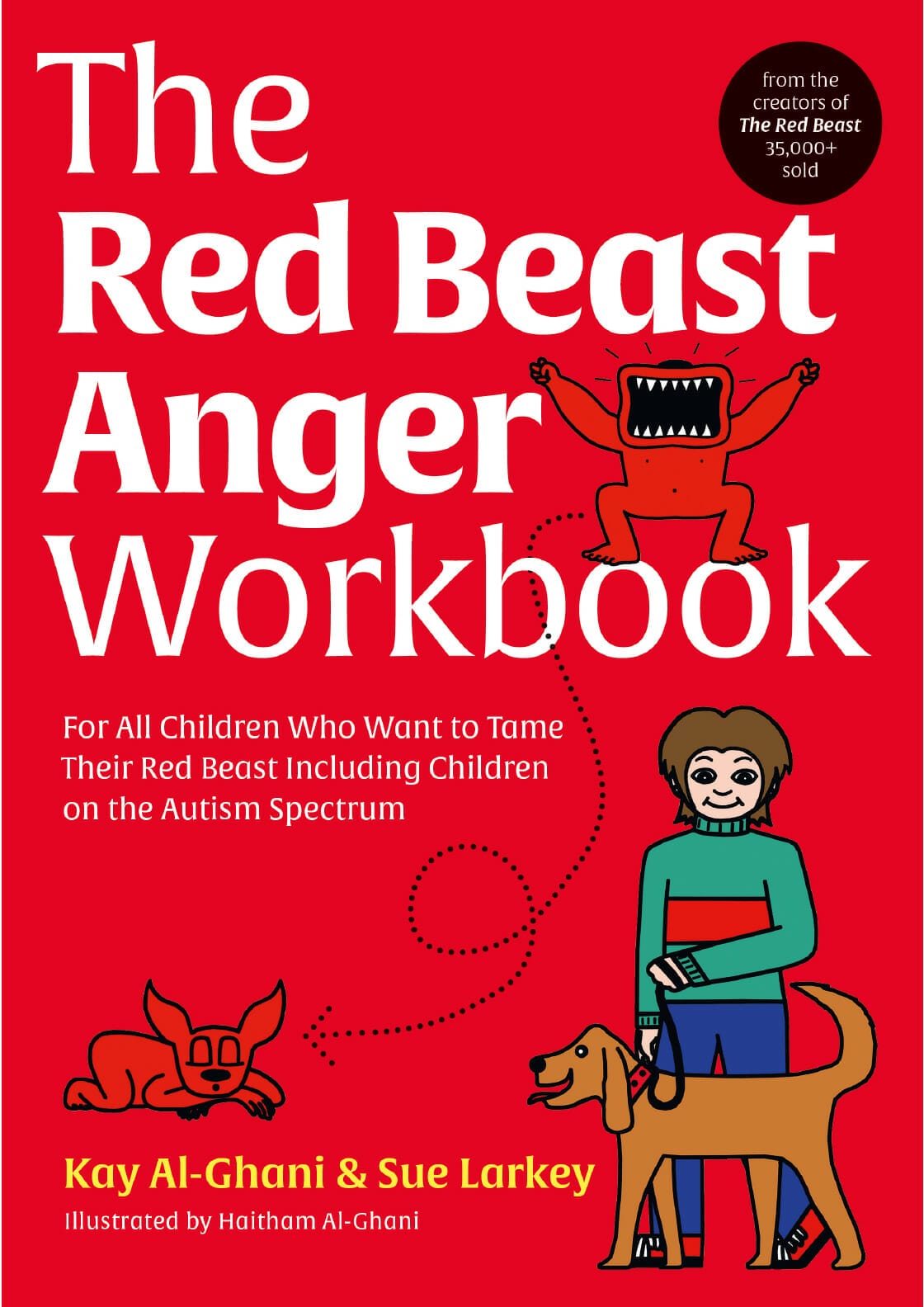
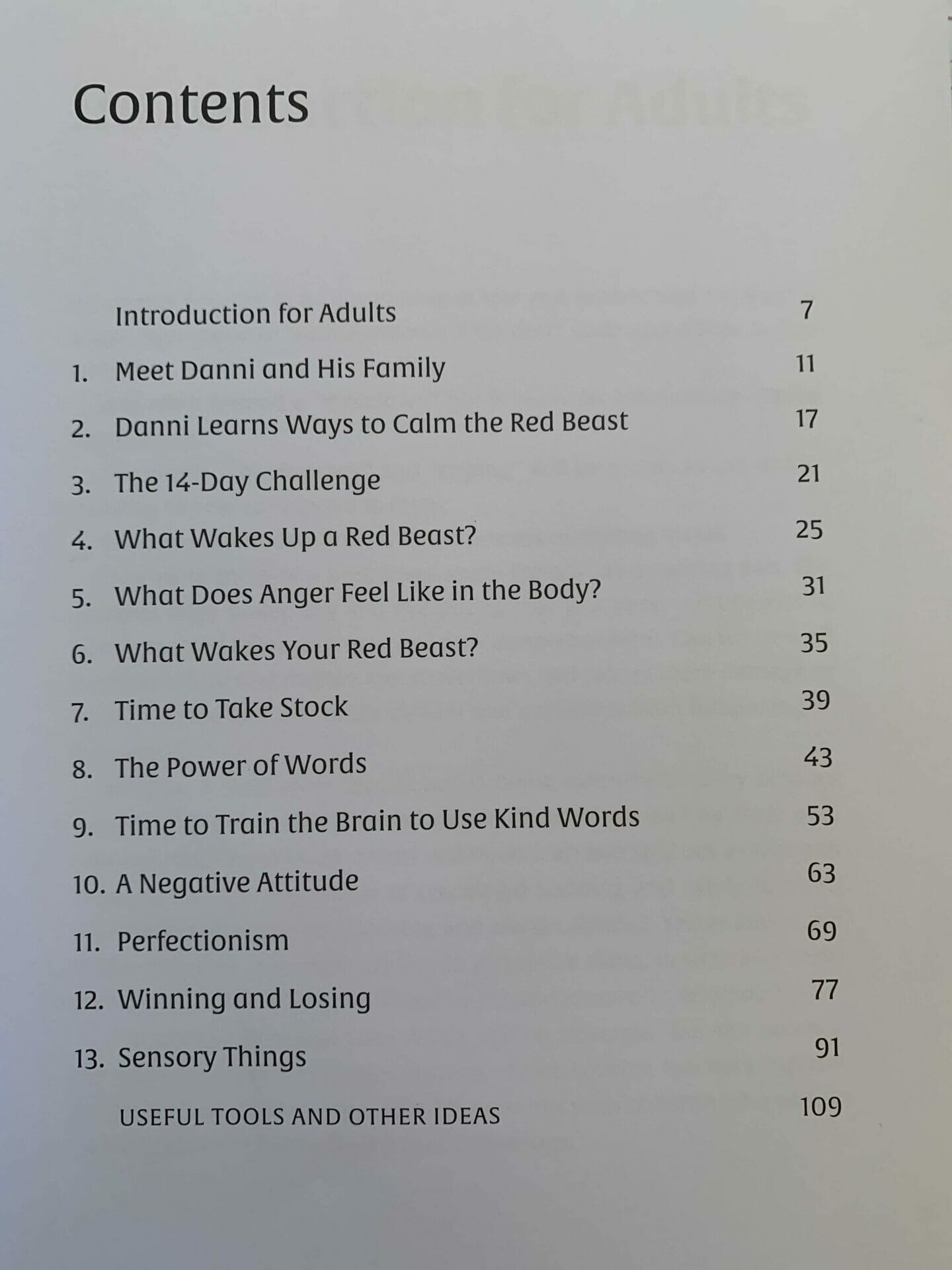

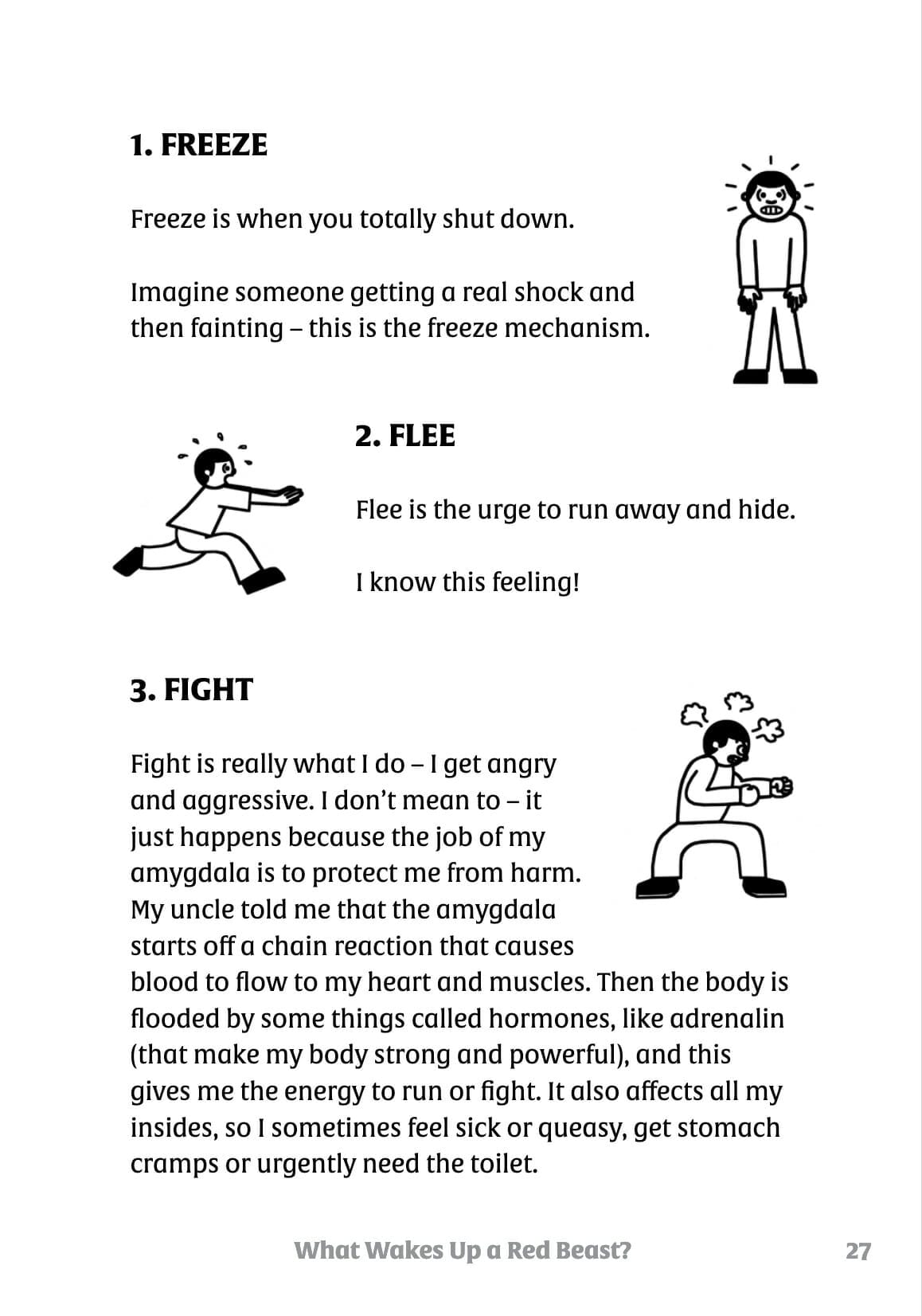
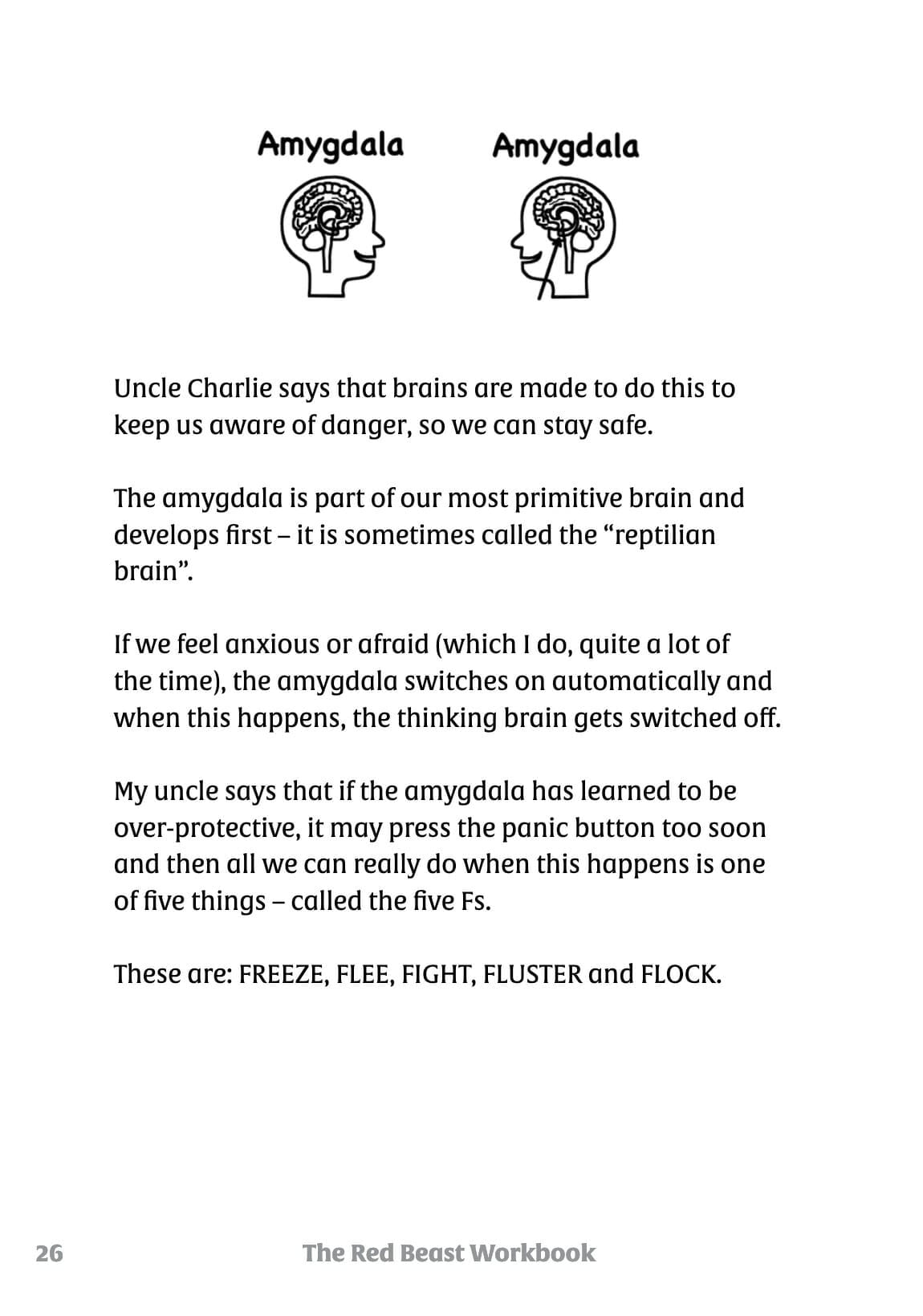
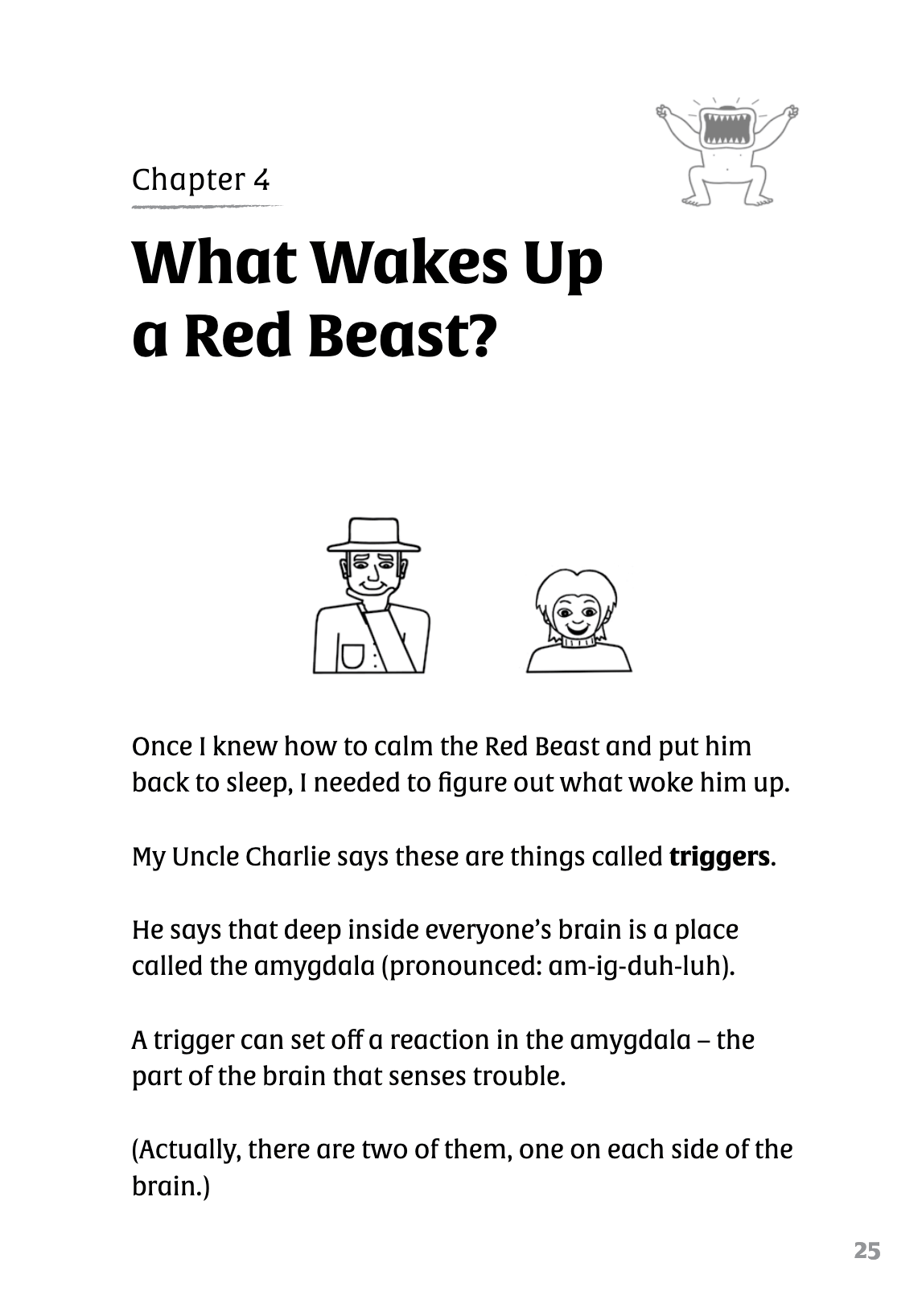
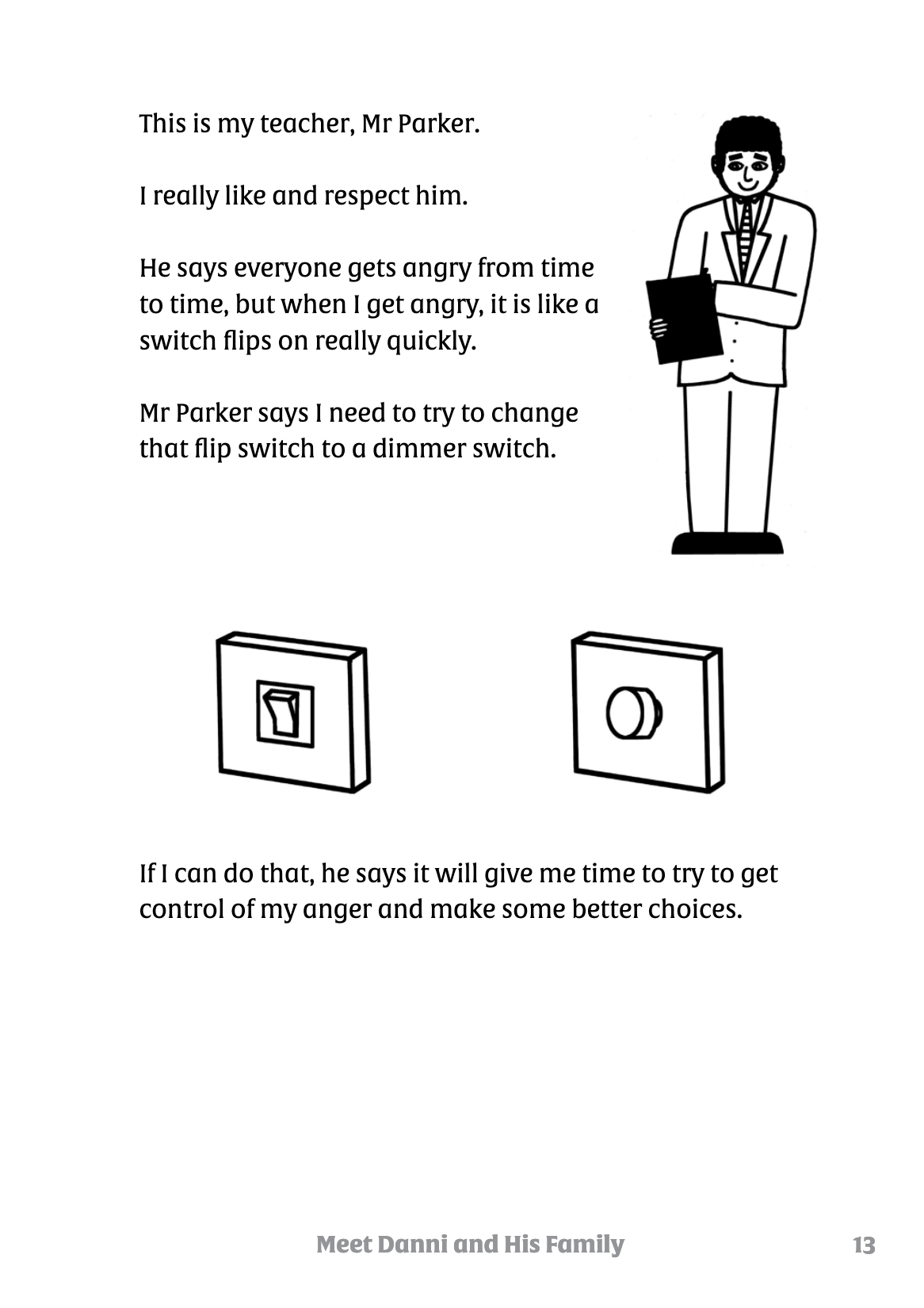
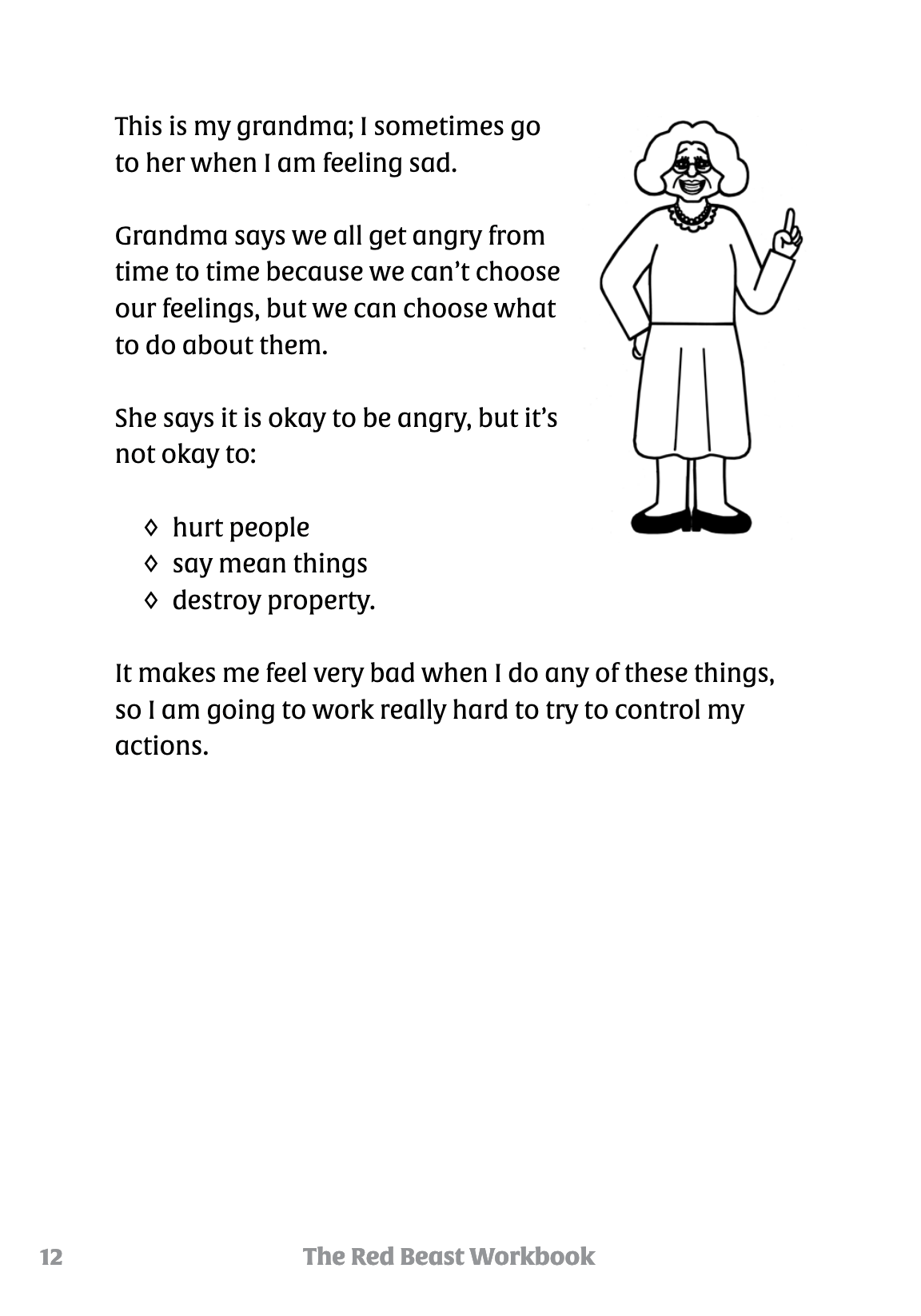
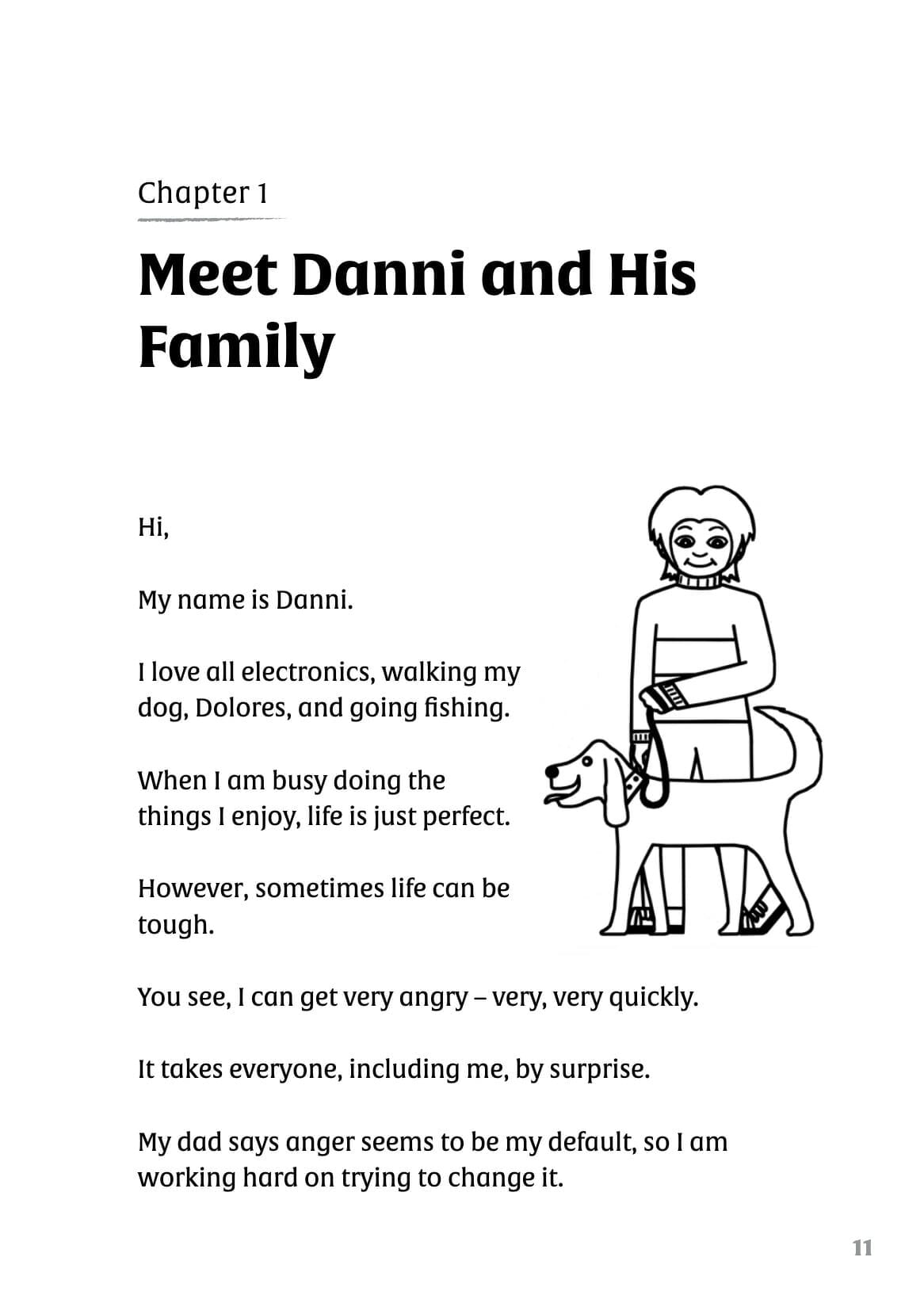

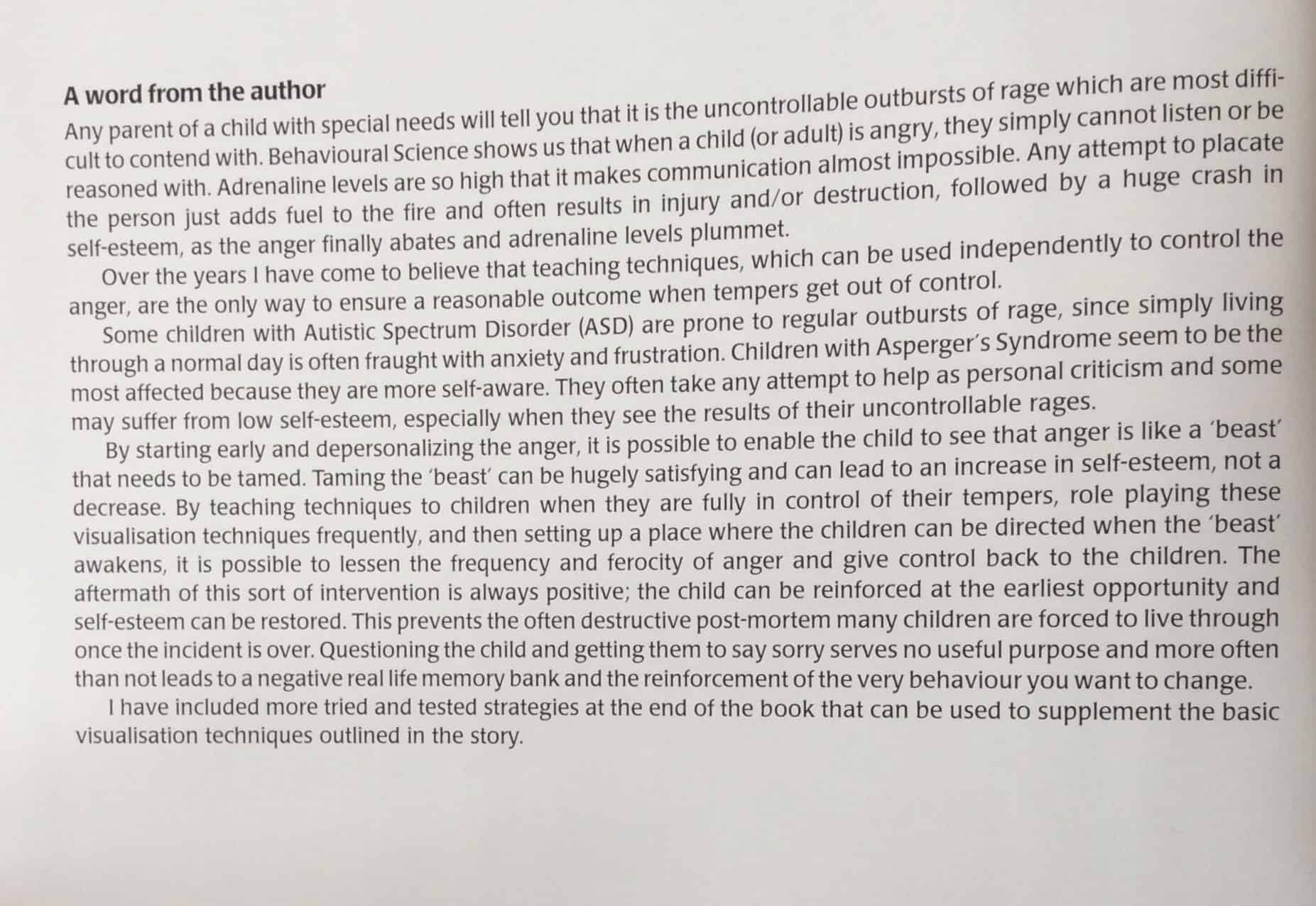
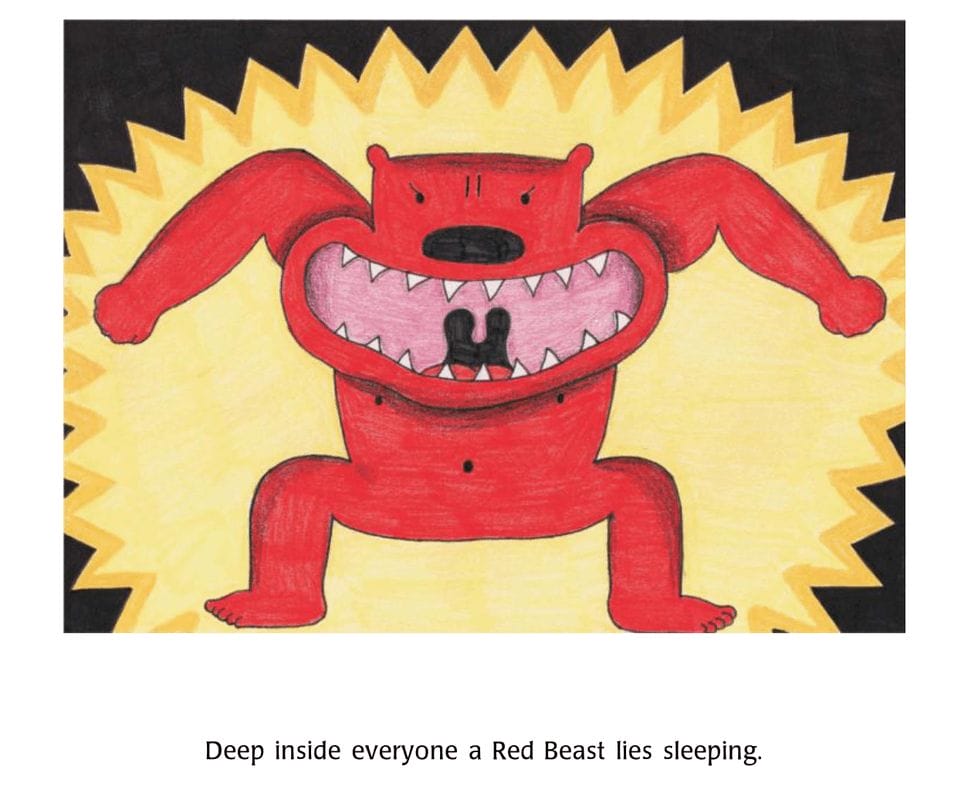

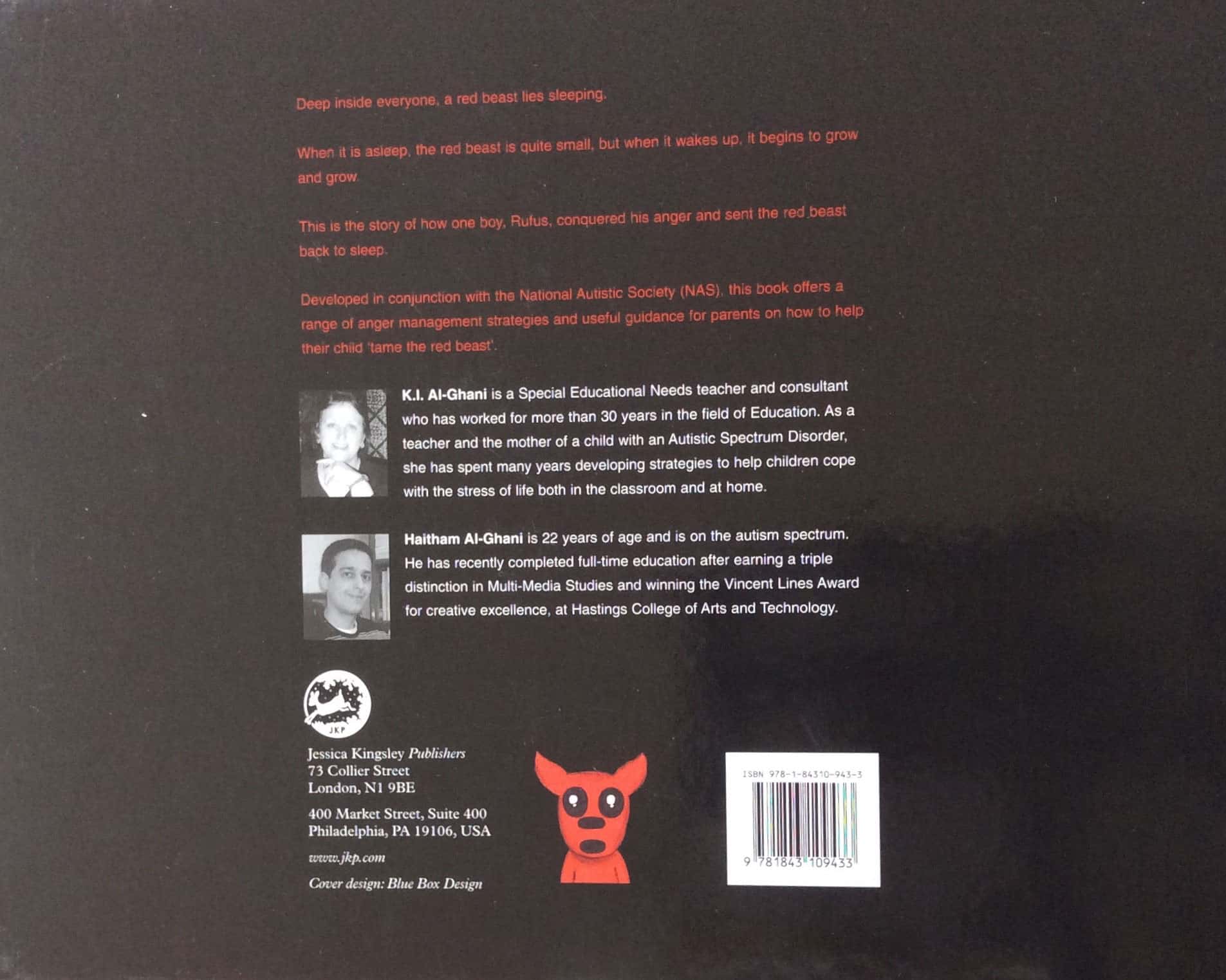
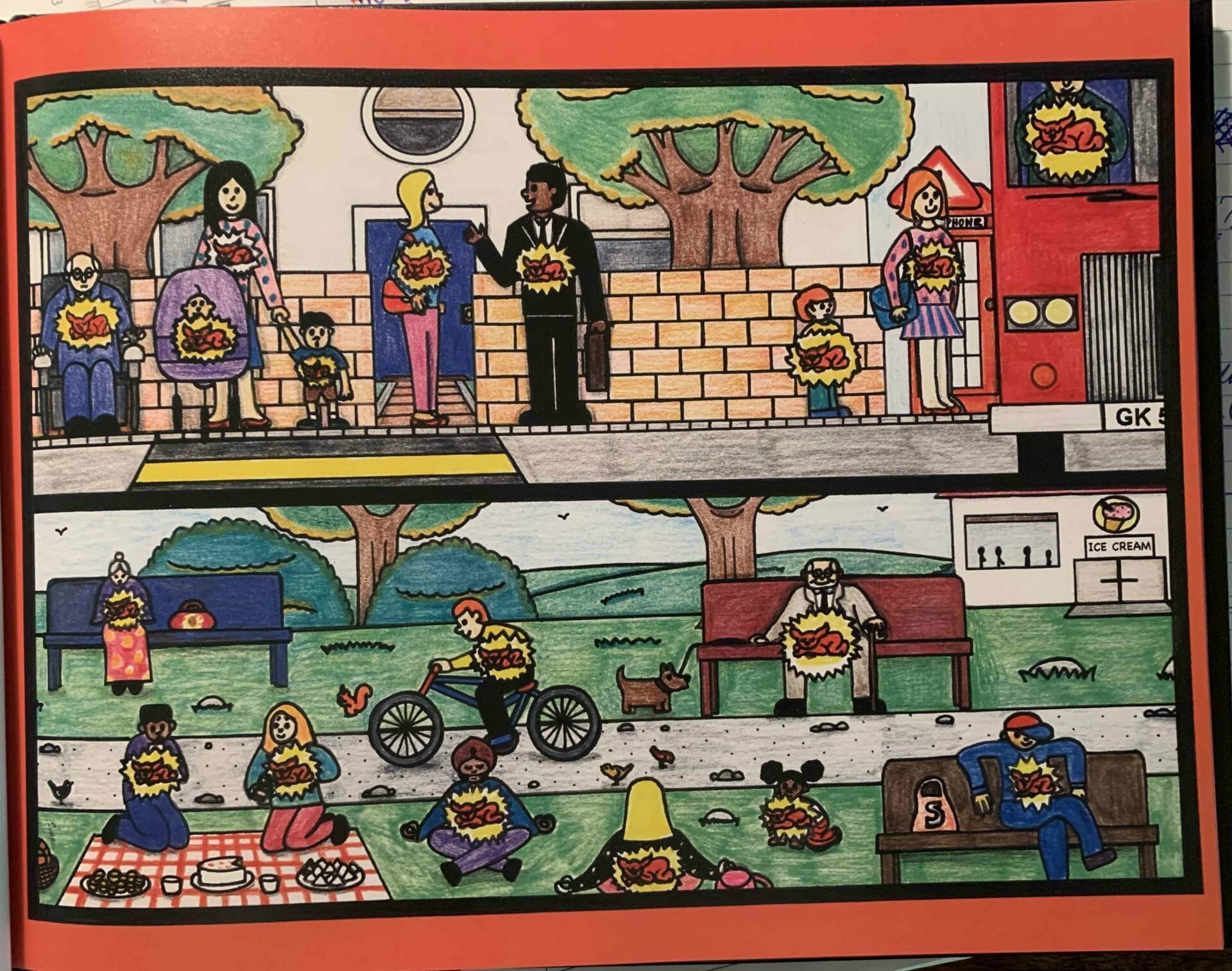
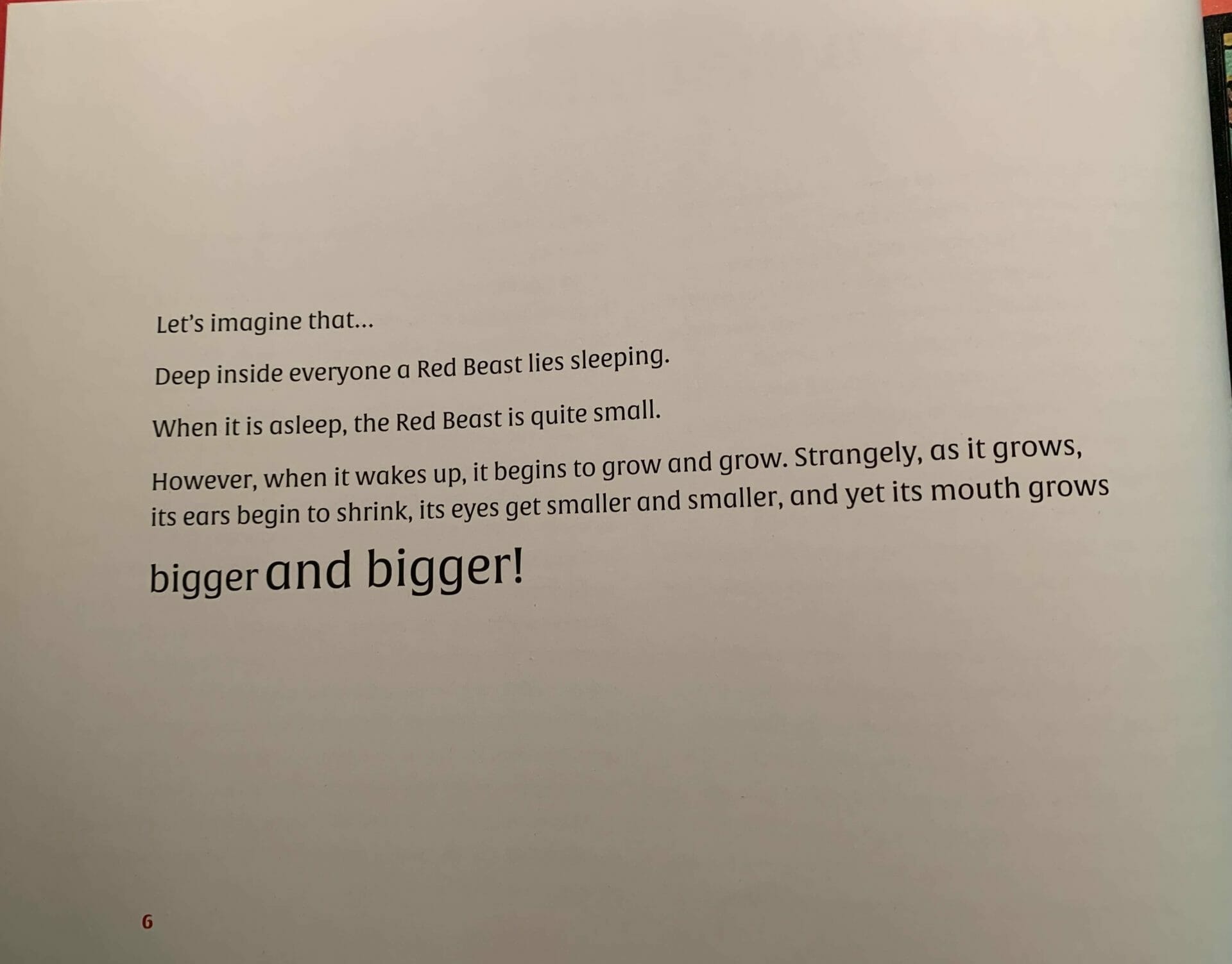

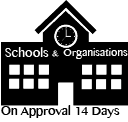
 Sorry we no longer ship items outside Australia. Please consider the digital versions of Sue’s Books –
Sorry we no longer ship items outside Australia. Please consider the digital versions of Sue’s Books – 